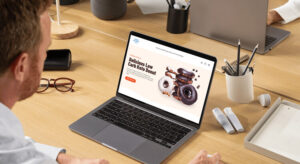Why Website Accessibility Matters in 2025 (And How to Make Your Site Inclusive)
As 2025 unfolds, website accessibility is no longer optional—it’s essential for every modern business. It’s not just about meeting legal standards like ADA compliance, but about crafting inclusive, user-friendly experiences that serve everyone. By aligning your website with the Web Content Accessibility Guidelines (WCAG 2.1), you’ll open your brand to millions of users and improve everything from user experience to SEO. Here’s how to make it happen.

What is Website Accessibility?
Website accessibility means designing your site so it’s usable by everyone—including people with disabilities. This includes visitors who are visually impaired, hearing impaired, or who have motor or cognitive challenges. The globally recognized WCAG 2.1 guidelines are built around four principles—Perceivable, Operable, Understandable, and Robust (POUR)—to help you ensure accessibility for all.
Why Website Accessibility Matters in 2025
1. Legal Compliance Reduces Risk
Laws like the Americans with Disabilities Act (ADA) and the European Accessibility Act mandate accessible websites. Failing to comply can result in lawsuits, fines, and reputational damage.
2. Reach Over 1 Billion Potential Users
There are more than 1 billion people worldwide living with disabilities. An accessible site welcomes this underserved audience, increasing traffic, engagement, and conversions.
3. Enhance User Experience (UX) for Everyone
Accessible websites are typically better designed for all users. Cleaner layouts, intuitive navigation, and faster load times reduce bounce rates and keep users engaged.
4. SEO Benefits from Accessibility
Search engines reward websites that use proper semantic structure, alt text, heading tags, and clear navigation—all of which align with accessibility best practices.
5. Build a Future-Proof, Inclusive Brand
In 2025, consumers care about brand values. An accessible website positions you as inclusive, ethical, and forward-thinking—boosting loyalty and reputation.

How to Achieve Website Accessibility in 2025
Use this as a step-by-step checklist to meet WCAG 2.1 and create a fully accessible, high-performing website:
1. Follow WCAG 2.1 Principles (POUR)
Ensure your content is:
Perceivable: Provide alt text, use sufficient color contrast, and structure headings properly.
Operable: Enable full keyboard navigation and avoid content that triggers seizures.
Understandable: Use clear language and predictable navigation.
Robust: Ensure your site works on all browsers and assistive devices.
2. Add Descriptive Alt Text
Every image should include relevant alt text. This helps screen readers describe visuals and boosts image SEO.
3. Enable Full Keyboard Accessibility
Make sure all forms, buttons, menus, and pop-ups can be used via keyboard only—critical for users with motor impairments.
4. Use High Color Contrast
Tools like WebAIM’s Contrast Checker help you maintain AA or AAA compliance, improving readability for users with low vision.
5. Add Captions and Transcripts
Video content should include captions and transcripts to accommodate hearing-impaired users and boost video SEO.
6. Conduct Regular Accessibility Audits
Use tools like Google Lighthouse, WAVE, or Axe to test your site and fix new issues over time. Accessibility isn’t a one-time fix—it’s ongoing.
Final Thoughts: Build an Accessible Web, Reach More People, and Future-Proof Your Brand in 2025
The internet in 2025 must be for everyone—and website accessibility is your key to unlocking that future. From legal compliance to improved UX and SEO performance, accessible websites deliver both ethical value and competitive edge. By following WCAG 2.1 and prioritizing inclusivity, you’re not just checking a box—you’re opening your brand to over a billion potential users and signaling that your business cares.
💡 Start integrating accessibility best practices today—because inclusive, high-performing websites don’t happen by accident.
💬 What accessibility feature will you implement first?
📞 Need expert help making your website accessible and optimized?






